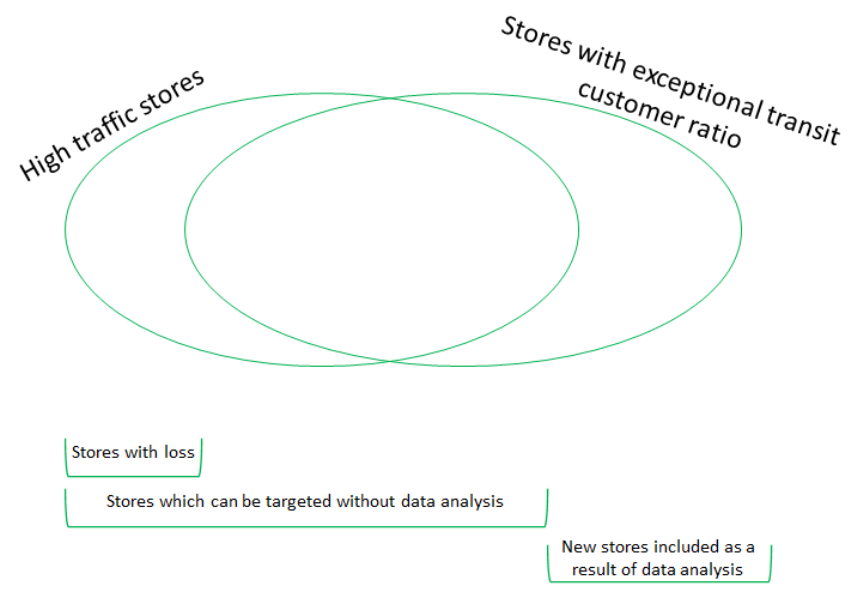Reading time: 4 min

Business problem
Retail pricing is one of those fields that can greatly be supported by data analysis, with measurable, high returns on investment. In many cases it’s simply not possible to set different prices on product level – due to missing data or technical limitations. In such situations pricing may be differentiated by location or by time period.
As an example, there are many several days and weeks in the summer whose sales are influenced by transit customers when the shops can expect less price elasticity and react with appropriate price changes.
Our client is a multinational company in the CEE region with partial retail focus, owning and operating a store network consisting of 1000 shops. With regards to convenience goods sold, the selection and definition of re-priced products and the affected store locations was done by Hiflylabs.
Let’s get to the data!

The basis of our solution is that price-changes will affect not all products and not all stores, as a general price increase can negatively impact sales.
- Where to re-price?
The target stores were selected by checking which locations experience a growing ratio of transit customers in the summer season which indirectly decreases price elasticity.
Shops located near touristic, waterfront and high-traffic areas were selected in our first simulations which was in line with our assumptions, however many unexpected shop locations ended up being included in the project.
- What to re-price?
The included products were ones that experienced higher-than-average sales rates in the summer season, such as energy drinks, water or ice cream.
- What to check our results against?
Using last year’s sales numbers we’ve come up with correction metrics (customer number growth, adjustments for inflation, etc…) that were used to clean the data from effects independent from pricing.
Results were evaluated in 80 locations. Compared to base sales the gains are the following:

But what is the ROI?

Without any data analysis, the logical step would’ve been to apply seasonal pricing only in high-traffic areas, where the achievable margin increase’s base would’ve been 10-20 million in HUF. Carrying out data analysis however allowed us to find stores where we could increase margins by 54% more than in only high-traffic locations. This is the result of 15 days of work.
An interesting fact is that stores that are less visited by transit customers experienced losses during our test, which further proves the necessity of data analysis and data-driven decision making in business environments.
In the following seasons the same methodology can be applied with only 1 day of work, or a software can be created and integrated into existing pricing systems.
Any questions?

No matter how successful data projects may be, our experience is that business stakeholders treat them with caution most of the time. This case study shall serve as an example that even with relatively little invested time, great results can be achieved.
Author: Márton Biró – Data Scientist
